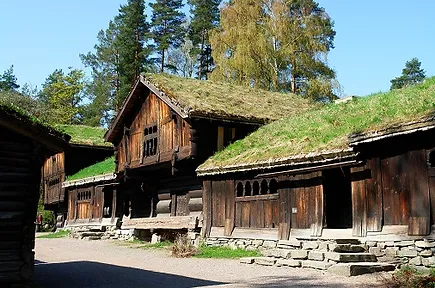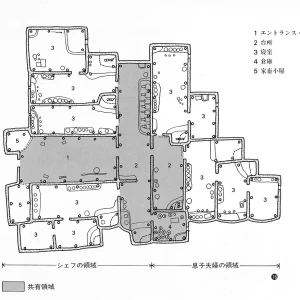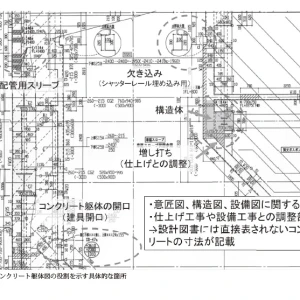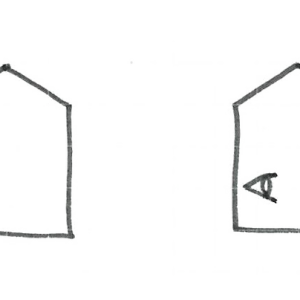
Beam-pillar and blockhouse wooden construction systems in the world: the areas of domination and mixing zones|Galyna SHEVTSOVA
Basing of the excavation materials from Sannay Maruyama archeological sites it can be supposed that in late Jomon period – the time of takayuka granaries formation, they could be beam-pillar or blockhouse system as well. But starting from Yayoi period these two systems became to mix and finally elaborated so called ita-azekura hybrid system that gave a little more shaping freedom to the builders and probably was stronger to the vibrations than blockhouse. Good examples of such granaries now can be seen at Toro archeological site excavations. It is also can be noticed some ita-azekura system influence to early Shinto architecture, mainly in Ise-jingu construction [24]. At Asuka and early Nara times due to political and economic reasons the big state storehouse building type arose. In seems that in 5th-6th cc. in Japan old fashioned ita-azekura storehouses existed synchronically with modern beampillar constructions inspired by Korean carpenters [24]. But nevertheless blockhouse survived till nowadays mostly in temple storehouses for ceremonial regalia.
In this point we have a good case to discuss the question of climate influence to the peculiarities of constructive system. Roughly speaking due to local climate, an ordinary beam-pillar of blockhouse system can obtain some unique peculiarities required only for this place specialty. Exact example of this possibility is the original blockhouse system of temple storehouses that was shaped in Japan no later than in Nara times [24] when rudimental for Far East blockhouse system was deeply modified and finally becoming even better suitable for storehouse function that beam-pillar system. Usually the structure of Japanese temple storehouse building consists of one simple square-planned blockhouse cage with slight enlargement to the top that rises on the low pales and is covered with rafter pyramidal roof as we can see at preserved till nowadays Todaiji and Toshodaiji temples’ azekura storehouses of Nara period. Inside of such storehouses it is indispensable to keep suitable for the temple regalia temperature and humidity level during all the year. This problem was resolved due to the atypical triangle shape of timbers intersection with their flat side turned inside the building. In lateral dimension the triangle-sectioned timbers are jointed together only with theirs tiny angle sides. In summer, when Japanese climate become extremely humid, the wooden timbers swell allowing the construction to clench together preventing the humid to get inside the buildings. But in winter, when humidity falls down, the triangle-sectioned timbers shrink creating the lateral slits between and thus allowing active aeration inside the building [25].
If we compare Japanese rudimental blockhouse system with elaborated Ukrainian one, we can notice that in Ukrainian case the timber’s intersection has more diversity: it can be round or semi-round (with flat side turned inside the building), square or rectangle and even in some cases octagonal or triangle. Ukrainian blockhouse has really wide shape-formation potential jointing several cages in complicated structures. The cage itself also can be not only square or rectangular in layout but also octagonal, hexagonal or trapeze shape. In the church architecture Ukrainian blockhouse can create multiplied narrowed to the top high towers of complicated space-constructive shape that not need interior horizontal support (beams or so) and can show inner space opened and lightened with windows from the top to the bottom of the building. It became possible because of high blockhouse outwork systems creating such space-constructive shapes as so called octagon-on-square and zalom. The octagon-onsquare is a space-constructive shape of a church top created with the blockhouse octagonal-plan cage that is posted on the blockhouse square cage base forming massive tower usually covered with pyramidal blockhouse top (pic. 4-a). This outwork method can be observed mostly in Ukraine and Russian wooden churches but obviously have some genetic relations with Caucasus and Iranian architecture [26]. The zalom is a unique Ukrainian space-constructive shape of blockhouse church top where the cage is narrowed with pyramidal inclining covering that is catted in the half and then continued up without inclination (pic. 4-b, 4-c). Zalom top structures can be multiplied in vertical dimension several times shaping high and slim, faulty similar with the pagodas towers. This space-constructive shape can be used in the top of the Ukrainian church substantively or be placed on the octagon-on-square base (pic. 4-d, more detailed explanation see in [15-16, 27-28]). All this is witnessing for about more developed stage of blockhouse in Ukraine than in Japan. But nevertheless, in Ukraine we can’t observe Japanese peculiarity of blockhouse’s seasonal temperature work changing like it can be seen on the example of Japanese sacral regalia storehouses.


Pic. 4-a Octagon-on-square space-construction shape,
Drogobych town church


Pic. 4-b Zalom space-construction shape on a square cage base,
Kisorychi village church


ic. 4-c Zalom space-construction shape on an octagonal cage base,
Zarubintsy village church


Pic. 4-d Zalom on a base of an octagon-on-square,
Novgorod-Siverskii town church
Pic. 4 The types of blockhouse tower space-constructive shape of Ukrainian churches (16-18th c.).
Beam-pillar systems of Japan and Ukraine also are really different and this difference clearly witnessing for about much developed stage of beam-pillar in Japan where it is more elaborated, refined and decorated. Some peculiarities of the both systems also allow to suppose in what type of climate they were formed. In Japan we can see lightness of the walls and their possibility to transformation witnessing to the hot and need to ventilate climate. Also we can see there a lot of special anti-vibration constructions giving mobility to the most Japanese beam-pillar joints (so called nuki system). Also due to developed elbow-bracketing (so called kumimono) systems Japanese beam-pillar is usually works with the principle of only vertical loading transmission, as in Ukraine the beam-pillar has permanently stabled joints with a lot of diagonal supporting elements (so called pidkis) helping to the stability of beam-pillar and transmitting the loading not only in vertical but also in diagonal dimensions [29]. The last phenomena of course could not be possible to exist if Ukraine has earthquakes or another high vibration factors (pic. 5).

Pic. 5-a Loading transmission way of Japanese beam-pillar constructions.

Pic. 5-b Loading transmission way of Ukrainian beam-pillar constructions.
As it was already noticed in the beginning, judging from the Eurasian map of wooden construction systems spreading (see pic. 1), the beam-pillar and blockhouse areas generally answer to the following criteria: beam-pillar system is mostly common for the south-east regions with warm and wet climate. The same is for the regions with high seismic activity or seacoast strong windy lends. For contraire, blockhouse is common for north-west motherland regions without accented seismic activity or strong winds. It also has to be noticed that in most cases the climate factors (south-north vector) and the vibration factors (seismic activities and seacoast-motherland vectors) are not coming in contradiction. Easily speaking, in general seismic and wind activity is usual for hot regions of the world and in the same time cold regions are usually not suffering from the earthquakes, typhoons or hurricanes. But it is also possible to determine some zones with mixed and hybrid blockhouse and beam-pillar constructions that appear at the borders of global areas of two systems spreading as well as at the territories with abnormal local climatic circumstances where the criteria suitable for the blockhouse and beampillar systems come into contradiction. Here usually we can observe the most curious and sometimes unique wooden architecture examples that can be just transmission forms between blockhouse and beam-pillar systems as well as creating separated building traditions.
It can be clearly seen from pic. 1 that an accented geographic border of beam-pillar and blockhouse systems spreading concentrating in a rich wooden architecture region lying around the Carpathian mountain ridge. So this territory can be estimated as a very temperature terminator of wooden constructive systems where coming from the South, suitable for beam-pillar climatic zone and coming from the North, suitable for blockhouse zone meet and provoke creating the mixing of wooden building systems. Here also meet the borders of several countries such as Ukraine, Poland, Romania, Hungary and Slovakia. Each of these countries has its original and high developed traditions of wooden architecture concerning not only rural houses and additional household structures but the first of all – the high developed wooden sacral architecture. Wooden churches of these countries are divinely different and mostly have their own genesis but at the point of Carpathian Mountains all of them showing the tendency of beam-pillar and blockhouse mixing. For example generally inclined to the blockhouse system Ukrainian wooden churches of Carpathian region show there some features of mixing with the beam-pillar as it can be seen at the Ukrainian churches of Boyko, Lemko and Transcarpathian types that has beam-pillar construction of western tower [21-23, 27], (pic. 6, pic. 7).
Revising in general the cases of blockhouse and beam-pillar mixing it is possible to determine four types of them. The first one is common in Carpathian region lay-out form of beam-pillar and blockhouse systems mixing where some lay-out parts of the building are beam-pillar and the other are blockhouse. For example, the narthexes (western towers) of some Lemko types of Ukrainian wooden churches are beam-pillar, although the nave and altar parts are blockhouse (see pic. 6-a) [22, 23]. The similar point we can observe also in almost all types of Carpathian wooden churches in Romania, Poland and so (pic. 6-b) where blockhouse body of the churches are jointed with beampillar narthexes [28].

Pic. 6-a Ukrainian-Poland Lemko type blockhouse churches with beam-pillar narthex belfry. Poland, Mikulashova village (drawings by D. Buxton). |

Pic. 6-b Poland wooden |

Pic. 6-b
Pic. 6 Lay-out form of beam-pillar and blockhouse systems mixing.
 |
 Pic. 7-a Ukrainian Boyko type blockhouse church with upper beam-pillar part of the narthex belfry. Sukhyi and Kryvka villages, 18th c Pic. 7-a Ukrainian Boyko type blockhouse church with upper beam-pillar part of the narthex belfry. Sukhyi and Kryvka villages, 18th c |
 |

Pic. 7-b Ukrainian Lemko type blockhouse church with upper beam-pillar part of the narthex belfry. Kanora village, 18th c. |
 |

Pic. 7-c Romanian blockhouse church with upper beam-pillar part of the narthex belfry and rafter roof. Ukrainian Krainikove and Romanian Surdesti villages, 17-18th c. |
Pic. 7 Support form of beam-pillar and blockhouse systems mixing .







